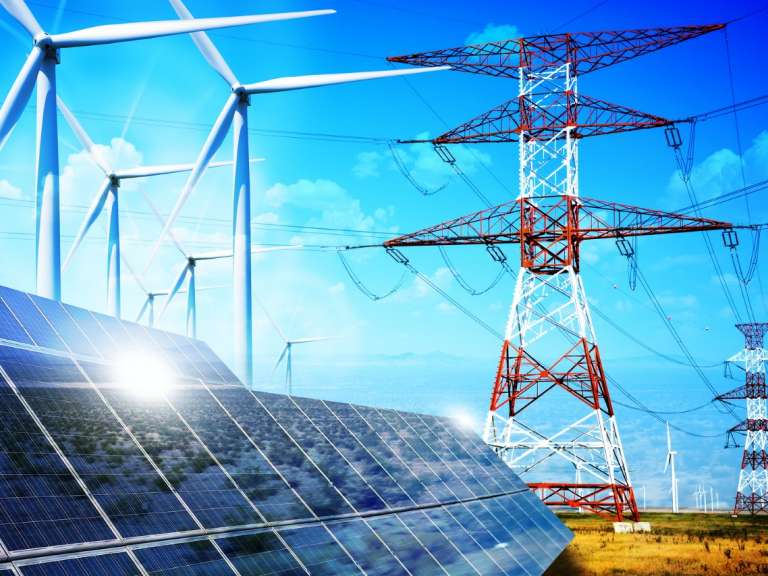Blockchain technology is taking the energy sector by storm. From commodities trading to peer-to-peer energy exchanges to microgrids, blockchain use cases are growing—and pilot projects are already proving successful.
Blockchain Technology Links Investors and Consumers with Renewable Energy Projects
The distributed ledger technology is an innovative new way to galvanize green energy investment by providing a platform that connects developing projects with investors and even energy consumers.
A reduction in subsidies, along with banks demanding more start-up capital, is directly impacting investment in renewable power projects. A 2018 Bloomberg New Energy Finance report, for example, notes that Europe suffered a decline in renewable energy investments of 36 percent in 2017. This was in large part due to an end to subsidies for onshore wind and utility-scale solar in the UK, the report says.
As traditional funding avenues thin out, can blockchain—which offers a secure, decentralized platform for unfamiliar parties to exchange information and complete contracts—turn the tide and provide new access to capital for clean energy development?
WePower, a blockchain-based start-up in Lithuania, thinks so.
New Blockchain-Backed P2P Platform Enables Early Purchase, Sale and Trade of Energy
Through WePower's Ethereum-based blockchain platform, which launched to much fanfare in July 2018, green power generation projects can secure development funding by selling part of their future energy production directly to energy consumers and investors upfront.
Essentially, the platform connects renewable energy producers with potential buyers. Buyers purchase energy tokens that represent one kWh of electricity that the project will produce in the future, according to a white paper by WePower. Buyers can then use the tokens to offset energy bills, trade them on the marketplace, or even sell them into the wholesale energy market. The contracts brokered through the platform provide a funding stream for the power projects.
WePower legally acts as an independent energy supplier, which enables the platform to connect to the grid network, the local energy exchange, and end users. The company receives data about the produced and consumed energy, as well as energy prices from the grid. According to its white paper, the platform will eventually host an auction for energy delivered from merchant solar plants in the south of Spain.
Estonian Start-Up Shines a Light on a New Way to Fund Solar Plants: Initial Coin Offerings
WePower has also partnered with Estonian national transmission service operator Elering and electricity retailer 220 Energia, reports Business Wire, as well as wind power technology firm Eleon, according to the WePower blog.
WePower isn't the only firm using blockchain to finance green energy projects, however. The Estonian start-up, Hyperion Fund, was created in 2017 to enable faster solar plant development in emerging power systems through blockchain, the company says in a Lightpaper.
Using the Hyperion blockchain platform, private individuals and investors can hold a stake in solar power plants. Users buy tokens through an initial coin offering (ICO) of solar power plant capacity. The blockchain-based technology keeps a digital ledger of all the transactions that take place on the platform, and all transactions are publicly visible and immutable to provide security for investors. However, unlike WePower, the company focuses on more advanced projects that have already secured a power purchase agreement, according to its Lightpaper.
The Lightpaper also says Hyperion Fund has 100 MW secured for 2018 at a xed tari of $0.09–0.2 per kW, as well as a 1500-MW total pipeline for 2018–2022.
Blockchain-Enabled Microgrids Allow Communities to Use Local Renewable Energy Sources
In addition to Hyperion Fund and WePower, blockchain-based technology is proving successful in shoring up the viability of small, community-based microgrids.
Australia-based Power Ledger, for example, is a new renewable energy platform that allows households and companies that own energy assets, such as rooftop solar, to trade electricity with their neighbors and set their own prices.
In August, the company launched what it described on Medium as "a world-first peer-to-peer renewable energy trading trial" at a precinct in Bangkok, Thailand. As part of the project, 635 KW of solar PV will be traded across four complexes, including a shopping center and a dental hospital, according to Power Ledger's Medium post.
"This trial will showcase how our world-leading blockchain technology can provide secure, trustless, and immutable transactions of renewable energy between participants," says David Martin, Power Ledger's managing director, according to Medium.
The company says it has several other projects in operation in Australia.
Blockchain Offers Simplicity for Energy Investment, But Scalability is an Open Question
Many blockchain use cases and projects such as WePower and Hyperion Fund are nascent. But there is huge potential—and appetite—for this technology's use cases in the power industry to grow.
That said, it's not yet known how much these projects can scale. WePower has secured its first clients in production, who are developing renewable energy sources and generating more than 1000 MW of solar energy capacity in Spain, according to the company's white paper. The white paper also states that the company wants to scale beyond what's possible with microgrids, and therefore must not bypass the grid, like microgrids do. Instead, it wants to bring "transparency and simplicity to the market . . . delivering value unavailable today, due to market inefficiencies."
Put simply, WePower and Hyperion Fund operate as a trusted marketplace to connect buyers and project developers in one transparent platform. They essentially democratize green energy investment by removing many complexities and intermediaries that are traditionally involved.
Such platforms promise many benefits, as power systems transform around the world. Blockchain presents a compelling answer to managing multidirectional energy flows as renewables and DERs flood the grid. The technology has the potential to be used throughout the whole value chain of the energy system—from facilitating the funding of new projects to grid management and reconciliation. However, this potential still hinges on the success of these early pilot projects and the growth of blockchain technology itself.
